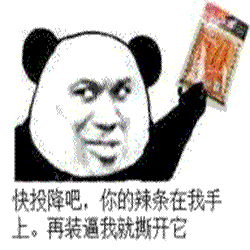It has been a long time since the last post. Recently, I have been busy with my work. I don't think it's nearly double eleven. It's equivalent to giving you some benefits.

I. What is array de-duplication
Simply put, delete the duplicate items in the array. Have you got GET? Below I will briefly introduce several basic methods and their advantages and disadvantages.
II. Method Summary
- Two level circulation
** push directly into the new array without the same value, and skip the internal loop with the same value **
/*
* @param {Array} arr -An array to be weighted
* @param {Array} result -Initialization result array
*/
const unique = (arr, result = []) => {
const len = arr.length;
for (let i = 0; i < len; i++) {
for (let j = i + 1; j < len; j++) {
if (arr[i] === arr[j]) {
// Equality is skipped directly
j = ++i;
}
}
result.push(arr[i]);
}
return result;
}** Mark the same, compare with the new array, insert ** if not
/*
* @param {Array} arr -An array to be weighted
* @param {Array} result -Initialization result array
*/
const unique = (arr, result = []) => {
result.push(arr[0]);
const len = arr.length;
let rLen = result.length;
for (let i = 1; i < len; i++) {
let flag = false;
for (var j = 0; j < rLen; j++) {
if (arr[i] === result[j]) {
flag = true;
break;
}
}
if (!flag) {
rLen++;
result.push(arr[i]);
}
}
return result;
}
** In-situ algorithm (operated on the array itself)**
const unique = arr => {
const len = arr.length;
for (let i = 0; i < len; i++) {
for (let j = i + 1; j < len; j++) {
if (arr[i] == arr[j]) {
arr.splice(j,1);
len--;
j--;
}
}
}
return arr;
};It seems that the code code is simple, but the memory consumption is high and it is not practical.
- Single layer circulation
** Object keys cannot be repeated **
const unique = (arr, result = []) => {
const obj = {};
const len = arr.length;
for (let i = 0; i< len; i++) {
if (!obj[arr[i]]) {
// If there is no key, add
obj[arr[i]] = 1;
result.push(arr[i]);
}
}
return result;
};This method can not judge the type of'1'and'1'. Solution:
- Add judgment data types, such as typeof, obj[typeof arr[i] + arr[i]], but that's still impossible to judge ['1'] and [1], because when added, the results are the same.
- When you add JSON.stringify() to de-format the result, you can judge it.
** After sorting, compare the two before and after, and add a new array if they are not equal **
const unique = (arr, result = []) => {
arr.sort();
result.push(arr[0]);
const len = arr.length;
let rLen = result.length;
for (let i = 1; i < len; i++) {
if (arr[i] !== result[rLen - 1]) {
result.push(arr[i]);
rLen++;
}
}
return result;
}The method is more direct.
** In-situ algorithm (comparing the two before and after sorting, deleting the same)**
const unique = (arr) => {
arr.sort();
let len = arr.length;
for (let i = 1; i < len; i++) {
if (arr[i] === arr[i - 1]) {
arr.splice(i, 1)
len--;
}
}
return arr;
}No extra space consumed
- Lazy rhythm
** indexOf to determine whether the first occurrence of an array element is the same **
const unique = (arr, result) => {
arr.forEach((item, index, array) => {
if(array.indexOf(item) === index) {
result.push(item);
}
});
return result;
}
// Use ES6 filter
const unique = (arr) =>
arr.filter((item, index) => array.indexOf(item) === index);More concise and better performance using ES6 method
** The ES6 method of indexOf uses includes to determine whether or not the element is in the new array**
const unique = (arr, result) => {
arr.forEach((item, index, array) => {
if(!result.includes(item)) {
// Or result. indexOf (item) ==== -1
result.push(item);
}
});
return result;
}It is recommended to use include
** Map data structure, do not understand the self-resolution of Map, Portal **
const unique = arr => {
const map = new Map();
return arr.filter((item) => !map.has(item) && map.set(item, 1));
}Object-relational mapping can set different types of keys so that it can quickly collect different data in arr
** Set data structure, no duplicate data is allowed, and Set supports deconstruction Portal **
const unique = arr => Array.from(new Set(arr)); // Or deconstruct it through ES6... const unique = arr => [...new Set(arr)];
Simple and crude
** reduce, given the initial value, gives the final value according to the array loop **
const unique = (arr, result = []) => arr.reduce((prev,curr) => prev.includes(curr) ? prev : [...prev, curr], result);
Three, summary
The method has been said almost, depending on how you use it, there are some similar methods, but gave a description, did not give specific examples, I hope you try it yourself, farewell!